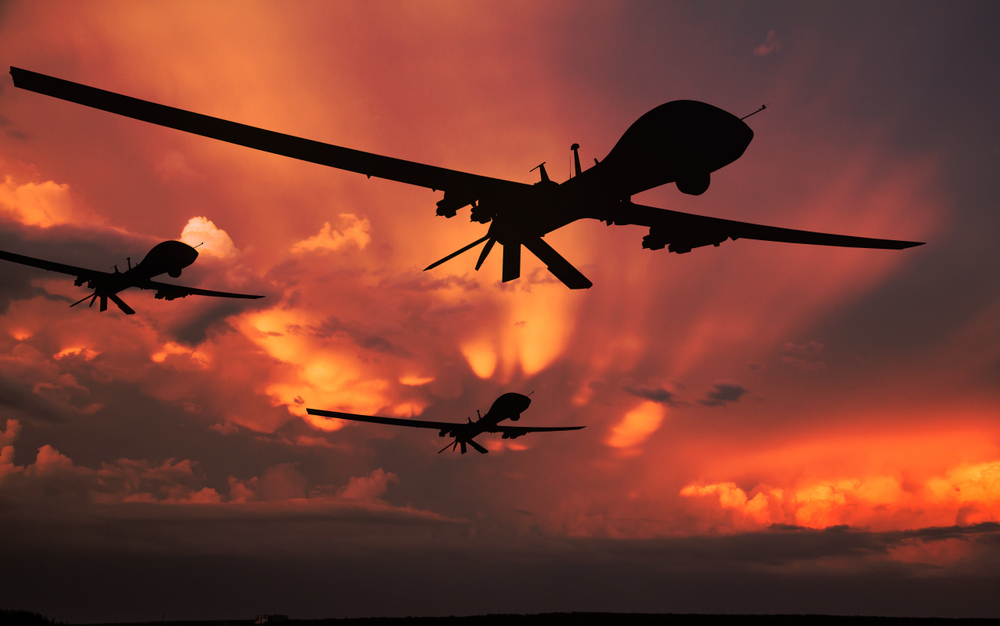The US has been expressing rising concern regarding the increasing use by Iran of drones in targeting US interests and providing support to its allies in the region. On January 10th, the US warned Iran of the consequences of targeting its nationals, anywhere in the world, as Iran continued its threats of punitive measures on the anniversary of the killing of Qassem Soleimani. The concern in Washington is related to the fact that, despite sanctions and restrictions imposed on weapons exports to Iran for years, the country has managed to develop and manufacture a wide arsenal of its own drones. Iran has become able to design and manufacture drone parts, thereby eliminating the need for foreign suppliers. The US estimates that Iran has developed types of drones capable of threatening its most important allies and strategic partners in the Middle East, to compensate for the weakness of its conventional air power.
The rapid development of drones has enabled Iran and its armed militias to attack high-value targets at low cost. Israel and the US have often accused Tehran of supplying armed militias affiliated with it in the region, especially Iraqi militias, the Houthis, the Lebanese Hezbollah, as well as the Bashar al-Assad regime, with drones that threaten the region’s security and stability.
With drones topping the list of threats facing US military presence in the Middle East, the US has undertaken measures to deal with this challenge, the most prominent of which are:
Military counterattacks: Although President Joe Biden’s administration supports diplomatic resolutions to the crises in the Middle East, it has used military force to target armed militias loyal to Iran in response to their drone attacks on US forces in Iraq. For example, last year, US forces carried out air strikes against pro-Iranian militias near the Iraqi Syrian border and warehouses of advanced Iranian-made drones used by pro-Iranian militias against US forces in Iraq and Syria.
Sanctions : On October 29th last year, the US Department of the Treasury announced sanctions on companies and individuals who provided critical support to the Iranian Revolutionary Guards’ drone program, used in targeting international shipping and US forces. This included Saeed Aghajani, Revolutionary Guard Drone Commander, under whose command drones belonging to the Revolutionary Guards’ Air Force carried out attacks against allied targets. The sanctions also included an Iran-based company that worked with the Quds Force to improve the drone program, and Revolutionary Guards Brigadier General Abdullah Mehrabi for his purchase of drone engines for the Revolutionary Guards.
Preemptive strikes: In December of last year, the Pentagon indicated that US Central Command would be taking more proactive measures to confront the increasing use of drones by armed militias loyal to Iran. After the US Al-Tanf military base in Syria was attacked on October 21st by pro-Iran militias using drones, the US military announced that it had shot down hostile drones near the base on December 24th. On January 7th this year, the US Embassy in Baghdad was threatened with an explosive drone that was shot down by US forces. On the second anniversary of Soleimani’s assassination on January 3rd, the US air defense system thwarted an attack by two explosive drones targeting a compound at Baghdad Airport that includes advisory forces from the international coalition against ISIS.
Drone-targeting defenses: The US is focusing its efforts on developing laser and microwave weapons to target large numbers of drones, and deploying a variety of systems, from handheld jammers to truck-mounted lasers. The US Navy began experimenting with laser prototypes to counter drones in 2009 on land and sea. On December 15th, 2021, it tested a high-energy weapon on a ship sailing off the coast of Yemen, calling the attempt a success, with no details provided. The US Air Force is also developing a high-energy microwave weapon to target unmanned aircraft, which has been 90% successful, with efforts ongoing to reach a 100% success rate. The US Department of Defense is currently working on producing a unified system that can provide early warnings, identify the source of the drone, and provide response options. US military companies, such as Lockheed Martin, are also developing advanced devices to target drones.
New legislation in Congress: Within the framework of Republican and Democratic bipartisan agreement on the need to confront Iran’s destabilizing role in the Middle East, and its military support to armed militias in a number of countries in the region, the Chairman of the Senate Committee on Foreign Relations, Democratic Senator Bob Menendez, and ranking member Republican Jim Risch, proposed the Stop Iranian Drones Act 2021. The proposal, put forth, on December 17th, 2021, aims to prevent Tehran and allied militias from acquiring drones by amending the Countering the Enemies of the United States of America through Sanctions Act to include any measure that would strengthen Iran’s drone program.
Efforts to target these types of weapons face significant obstacles, as it is cheap to manufacture drones, but expensive to develop weapons able to accurately confront them. The missiles used to confront drone attacks can cost up to USD 3 million, while a drone loaded with explosives costs no more than a few thousand dollars. Moreover, there are continuous upgrades in the drone industry, which makes it difficult for tracking and targeting systems to keep up. In addition, drones loaded with explosives are more difficult to target as their destruction can endanger people and facilities on the ground.


